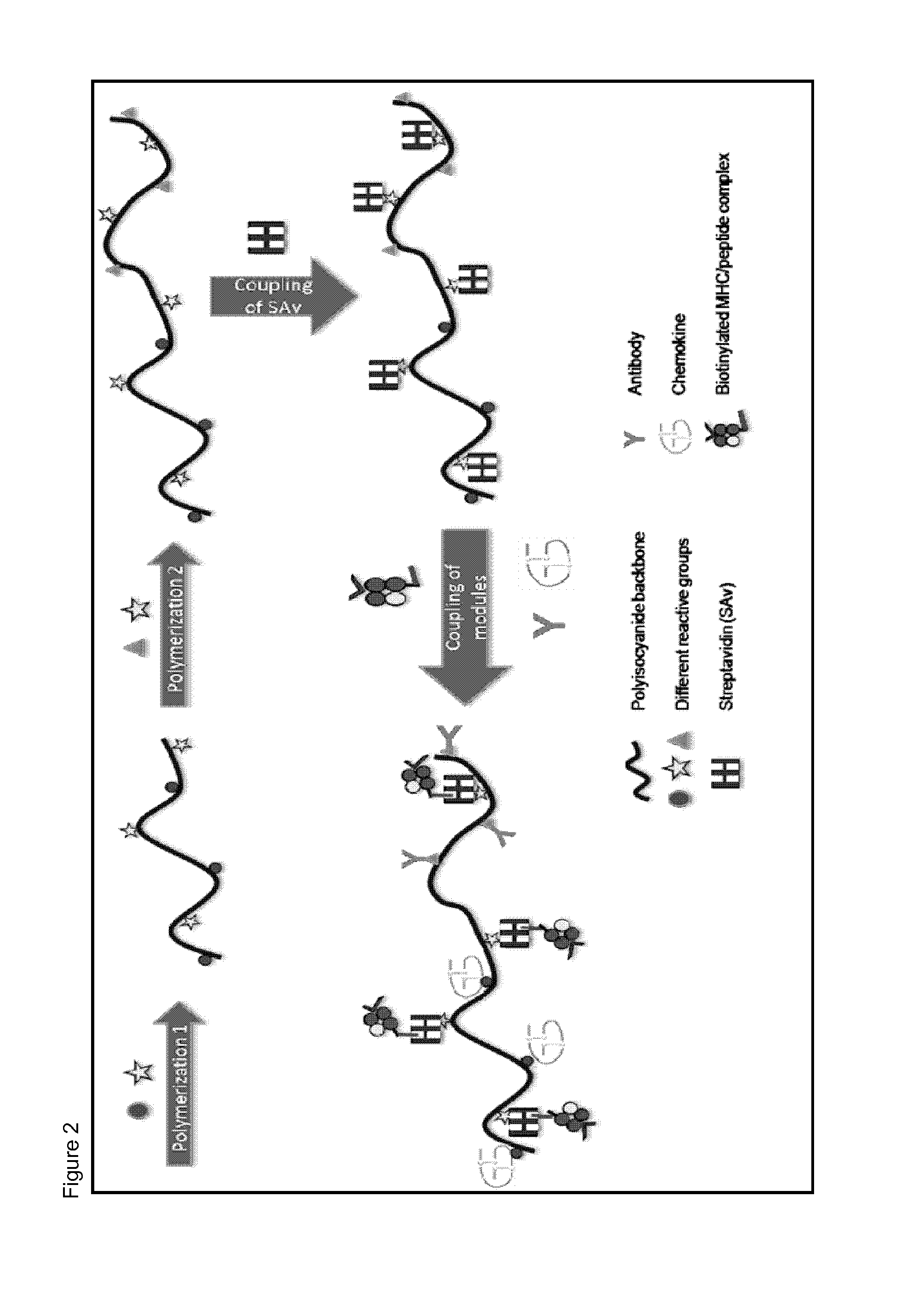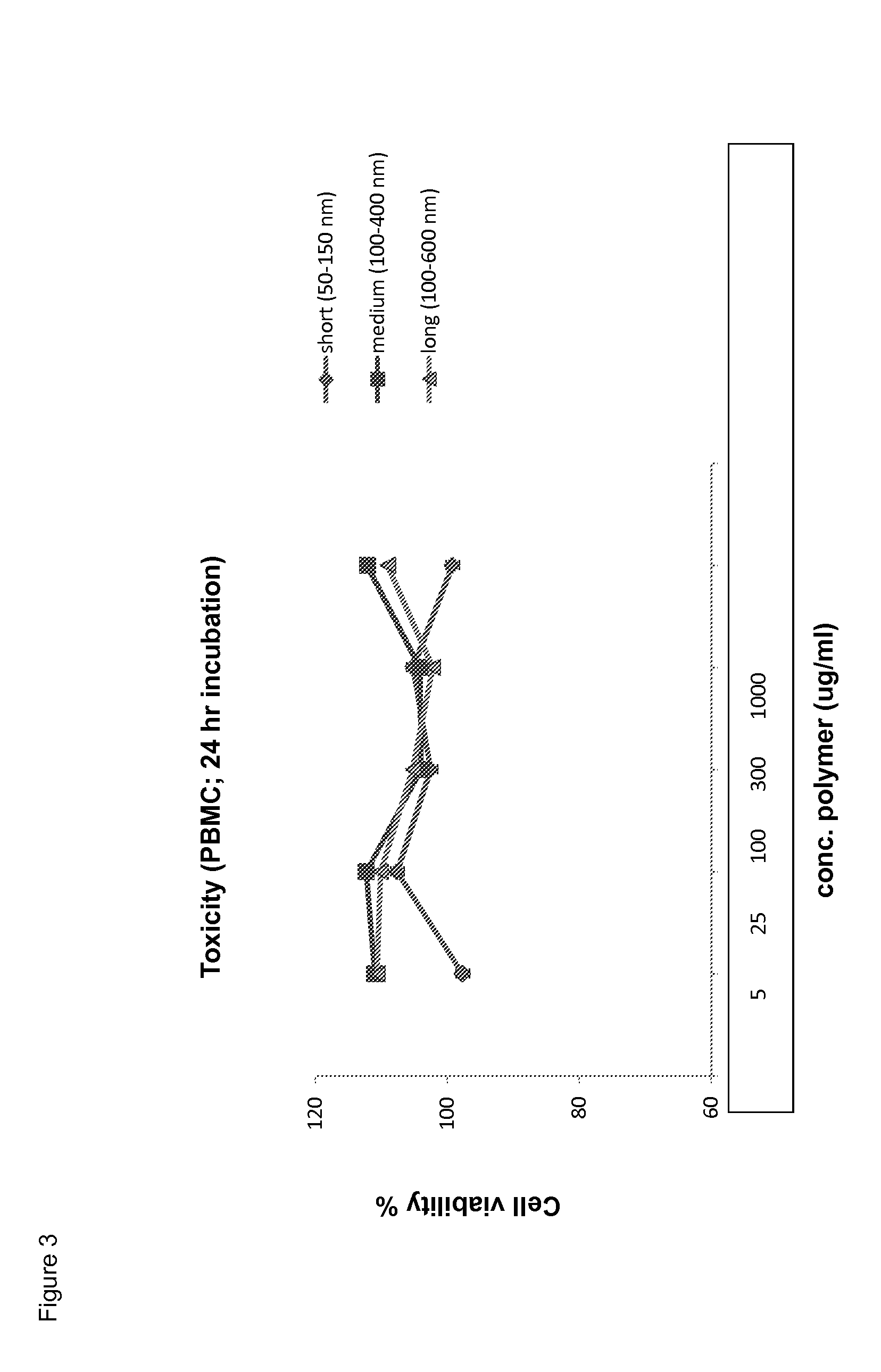Immunomodulatory protein constructs with a helical polymeric backbone
a technology of immunomodulatory protein and construct, which is applied in the field of protein constructs, can solve the problems of low subject to the variability that is inherent in the nature of the disease, and achieve the effect of improving the prognosis of multiple types of cancer
- Summary
- Abstract
- Description
- Claims
- Application Information
AI Technical Summary
Benefits of technology
Problems solved by technology
Method used
Image
Examples
example 1
Coupling of Components to the Helical Polyisocyanide Backbone
[0175]Anti-CD3 antibodies were attached to the helical polyisocyanide backbone as a simplified mimic for T-cell receptor stimulation. The anti-CD3 antibodies were coupled to the backbone via biotin-streptavidin binding.
[0176]The helical polyisocyanides were made more water-soluble by attaching polyethylene glycol (PEG) to the alanine side groups. Reactive groups (NHS-esters) were introduced at the end of part of the PEG chains, creating functionalized polysiocyanides. Subsequently, the functionalized polyisocyanides are reacted with streptavidin to obtain streptavidin-functionalized polyisocyanides. To remove the unbound streptavidin, the polyisocyanides were dialyzed against phosphate-buffered saline (PBS) for several days, using a 300 kDa cellulose ester membrane. The protein and polymer concentrations were analyzed to determine the amount of streptavidin bound to the polyisocyanides (analyzed by Coomassie blue staining ...
example 2
The Polyisocyanide Backbone does not Display Toxicity In Vitro and In Vivo
[0177]Toxicity in vitro: peripheral blood mononuclear cells (PBMCs) were incubated with different concentrations of polyisocyanides (of different lengths) for 24 hours. Subsequently, the cell viability was determined by annexine-V / PI staining. The results are shown in FIG. 3.
[0178]In vivo toxicity was determined by i.v injection of different amounts of polyisocyanides (100 μg and 1 mg) in C57 / B16 mice. The mice showed no signs of toxicity.
example 3
Motility of the Polymeric Backbone
[0179]By using fluorescent microscopy and live imaging techniques, it was shown that a filamentous-shaped backbone displays intrinsic motility, resulting in great flexibility and motility. FIGS. 4A to 4D show snapshot pictures taken at different time points from a movie taken of the backbone in a physiological salt solution using confocal microscopy techniques.
PUM
| Property | Measurement | Unit |
|---|---|---|
| length | aaaaa | aaaaa |
| length | aaaaa | aaaaa |
| length | aaaaa | aaaaa |
Abstract
Description
Claims
Application Information
 Login to View More
Login to View More - R&D
- Intellectual Property
- Life Sciences
- Materials
- Tech Scout
- Unparalleled Data Quality
- Higher Quality Content
- 60% Fewer Hallucinations
Browse by: Latest US Patents, China's latest patents, Technical Efficacy Thesaurus, Application Domain, Technology Topic, Popular Technical Reports.
© 2025 PatSnap. All rights reserved.Legal|Privacy policy|Modern Slavery Act Transparency Statement|Sitemap|About US| Contact US: help@patsnap.com



